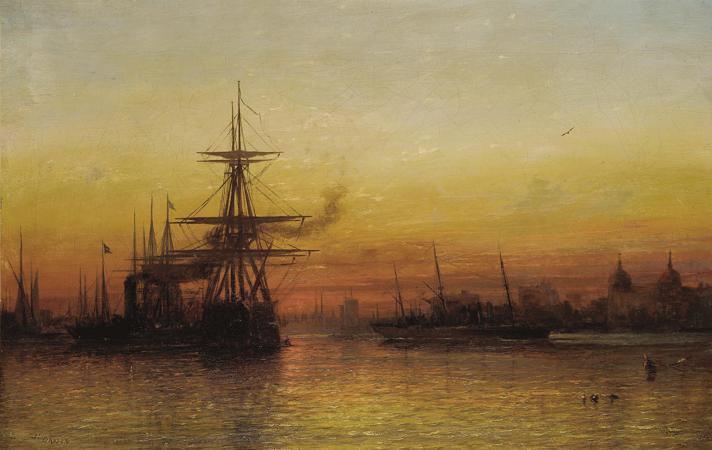Greenwich. Greenwich is an area of South East London, England, located 5.5 miles east-southeast of Charing Cross. It is located within the Royal Borough of Greenwich, to which it lends its name, and also within the historic county of Kent. Greenwich is notable for its maritime history and for giving its name to the Greenwich Meridian and Greenwich Mean Time. The town became the site of a royal palace, the Palace of Placentia from the 15th century, and was the birthplace of many Tudors, including Henry VIII and Elizabeth I. The palace fell into disrepair during the English Civil War and was demolished to be replaced by the Royal Naval Hospital for Sailors, designed by Sir Christopher Wren and his assistant Nicholas Hawksmoor. These buildings became the Royal Naval College in 1873, and they remained a military education establishment until 1998 when they passed into the hands of the Greenwich Foundation. The historic rooms within these buildings remain open to the public; other buildings are used by University of Greenwich and Trinity Laban Conservatoire of Music and Dance. The town became a popular resort in the 18th century and many grand houses were built there, such as Vanbrugh Castle established on Maze Hill, next to the park. From the Georgian period estates of houses were constructed above the town centre. The maritime connections of Greenwich were celebrated in the 20th century, with the siting of the Cutty Sark and Gipsy Moth IV next to the river front, and the National Maritime Museum in the former buildings of the Royal Hospital School in 1934. The place-name 'Greenwich' is first attested in a Saxon charter of 918, where it appears as Gronewic. It is recorded as Grenewic in 964, and as Grenawic in the Anglo-Saxon Chronicle for 1013. It is Grenviz in the Domesday Book of 1086, and Grenewych in the Taxatio Ecclesiastica of 1291. The name means 'green wic or settlement'. The settlement later became known as East Greenwich to distinguish it from West Greenwich or Deptford Strond, the part of Deptford adjacent to the River Thames, but the use of East Greenwich to mean the whole of the town of Greenwich died out in the 19th century. However, Greenwich was divided into the registration subdistricts of Greenwich East and Greenwich West from the beginning of civil registration in 1837, the boundary running down what is now Greenwich Church Street and Crooms Hill, although more modern references to East and West Greenwich probably refer to the areas east and west of the Royal Naval College and National Maritime Museum corresponding with the West Greenwich council ward. An article in The Times of 13 October 1967 stated: East Greenwich, gateway to the Blackwall Tunnel, remains solidly working class, the manpower for one eighth of London's heavy industry. West Greenwich is a hybrid: the spirit of Nelson, the Cutty Sark, the Maritime Museum, an industrial waterfront and a number of elegant houses, ripe for development. Royal charters granted to English colonists in North America, often used the name of the manor of East Greenwich for describing the tenure as that of free socage. New England charters provided that the grantees should hold their lands as of his Majesty's manor of East Greenwich. This was in relation to the principle of land tenure under English law, that the ruling monarch was paramount lord of all the soil in the terra regis, while all others held their lands, directly or indirectly, under the monarch. Land outside the physical boundaries of England, as in America, was treated as belonging constructively to one of the existing royal manors, and from Tudor times grants frequently used the name of the manor of East Greenwich, but some 17c. grants named the castle of Windsor. Places in North America that have taken the name East Greenwich include a township in Gloucester County, New Jersey, a hamlet in Washington County, New York, and a town in Kent County, Rhode Island. Greenwich, Connecticut was also named after Greenwich. Tumuli to the south-west of Flamsteed House, in Greenwich Park, are thought to be early Bronze Age barrows re-used by the Saxons in the 6th century as burial grounds. To the east between the Vanbrugh and Maze Hill Gates is the site of a Roman villa or temple. A small area of red paving tesserae protected by railings marks the spot. It was excavated in 1902 and 300 coins were found dating from the emperors Claudius and Honorius to the 5th century.
more...













